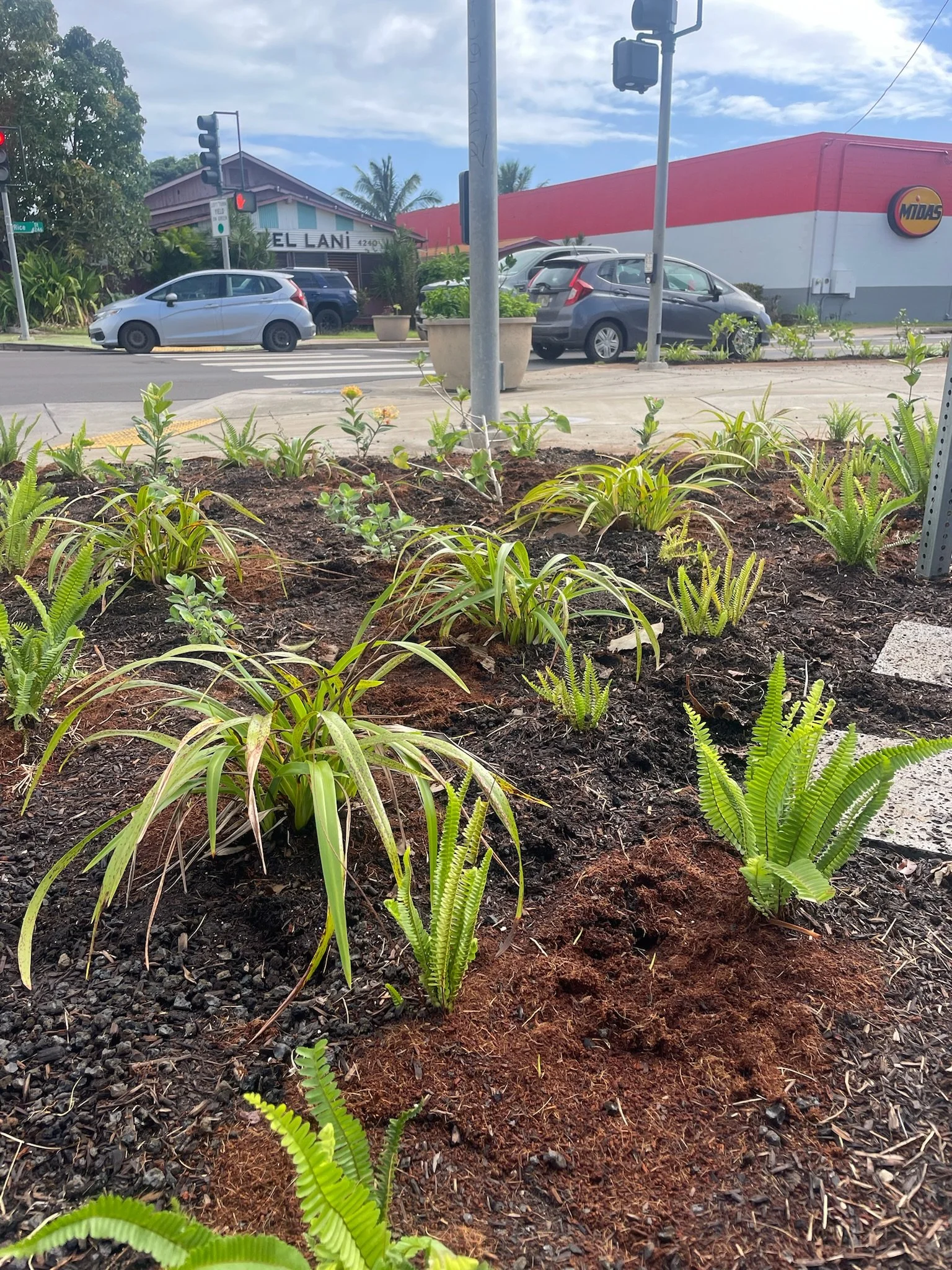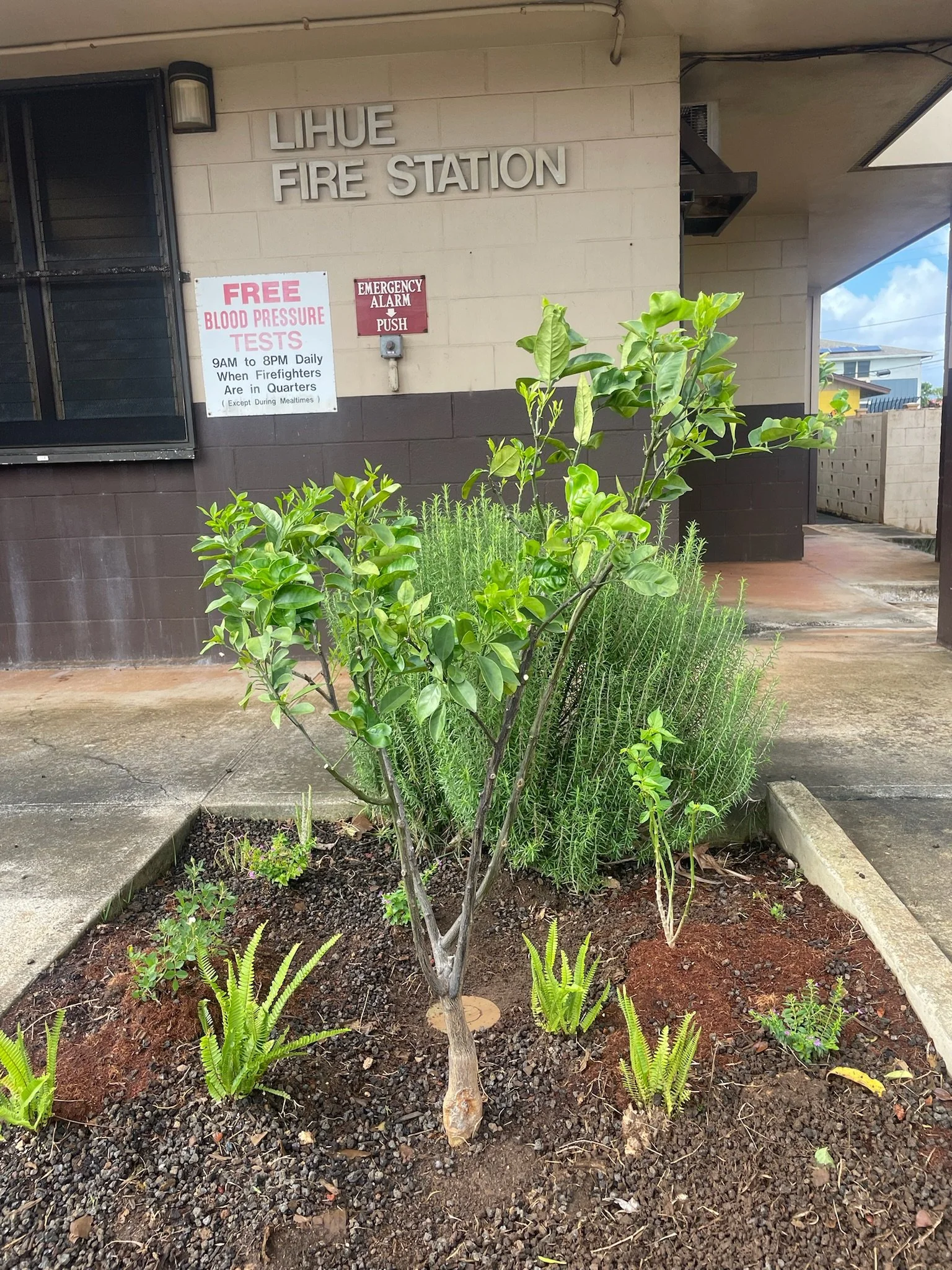Downtown Līhuʻe native plant revitalzation
The Downtown Līhuʻe Native Plant Revitalization project focuses on the maintenance and restoration of native Hawaiian plants in urban spaces to promote ecological health, community engagement, and cultural practices. Due to lost of funding this project has been suspended. We are looking for project partners and funders who are interested in the restoration and revitalization of our community.
If you are interested please contact us at kauairsba@gmail.com
Key objectives:
Maintain Health of Native Plants
By removing invasive species and using sustainable landscaping practices, the initiative helps protect biodiversity and improve soil and water quality in urban areas.
This aligns with HTA’s goal of preserving Hawaiʻi’s natural resources and promoting responsible environmental management in tourism zones.
2. Expand Native Plant Gardens and Green Spaces
By incorporating native plant landscapes in public areas, the project enhances urban walkability and beautifies gathering spaces, reinforcing HTA’s commitment to placemaking and regenerative tourism.
Expanding green spaces contributes to climate resilience by reducing urban heat and supporting sustainable tourism infrastructure.
3. Promote Environmental Stewardship Through Community Collaboration
Through volunteer initiatives, educational workshops, and partnerships with conservation groups, the project promotes shared responsibility for Lihue’s natural environment.
This aligns with HTA’s vision of community-led destination management, where residents play an active role in shaping sustainable tourism practices.
4. Integrate Cultural and Educational Elements, Such as Signage and Murals, to Highlight Hawai‘i’s Natural Heritage
The project incorporates educational signage, such as murals and interpretive displays, that showcase the cultural significance of native plants in Hawaiian traditions.
Informational materials help visitors and locals understand the ecological and cultural importance of these plants, fostering a deeper connection to Hawaiʻi’s heritage.
By integrating Hawaiian language, moʻolelo (stories), and indigenous knowledge, the project strengthens HTA’s goal of preserving Hawaiian culture and sense of place in visitor destinations.
Interested in volunteering?
Mahalo to our core volunteers and section leaders for mālama ʻaina on Rice Street. Special mahalos to Sylvia Lessa, Cheri Dennis, and Alyssa Miyake for watering our native plants daily.



